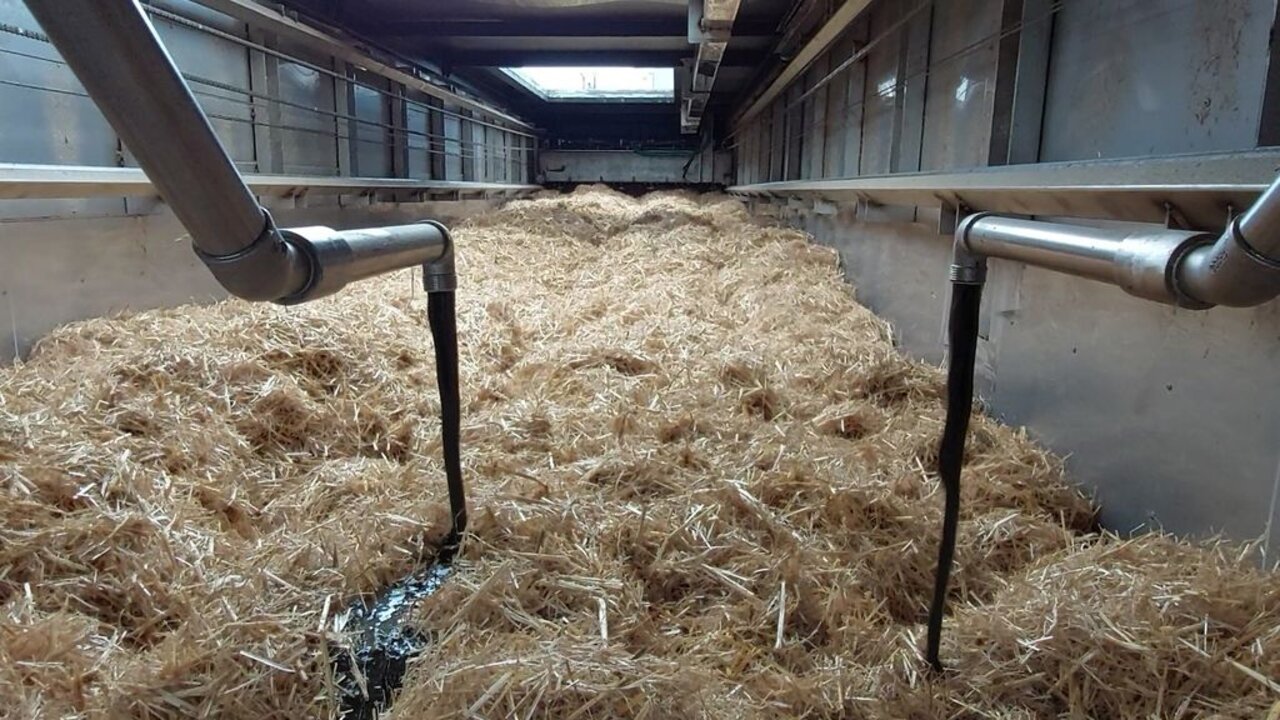Project
Fertilizer concentrates from residuals (DüaR)

Development and testing of an innovative and environmetally sound manure and digestate processing for the production of a solid humus product with phosphorus enrichment and simultaneous nitrogen separation in a transportable form as a liquid fertilizer.
In some regions of Germany livestock produces more nitrogen and phosphate as can be used for fertilizing. In other regions these nutrients are required. The Thuenen institute is investigating how manure transport can be made marketable.
Background and Objective
In regions with intensive livestock huge amounts of nitrogen and phosphate accumulate. On basis of tightened demands for fertilizing these key nutrient amounts cannot be used completely for fertilizing in the local area because nutrient surpluses may contribute to environmental impacts. In other regions these nutrients are required. However, the liquid manure transport is inefficient so far because of high water contents and missing storage capacities.
Aim of the project is the production of nutrient concentrates which are marketable, transortable and well calculabe in fertilizing effects using a technical conditioning process. Within the process a solid humus product should be produced with preferably high phosphate and potassium contents one the one hand and a high concentrated ammonium sulphate as a liquid ferilizer on the other.
In the process manure mixed with structure materials as straw should be composted under thermophilic conditions. Odorants should be degraded and unwanted seeds be inactivated. An extensive water evaporation is aimed to gain concentrated nutrients. The exhaust air from composting will be cleaned in a two-step chemically operating scrubber to produce a high concentrated soluble ammonium sulphate.
Target Group
- Animal farmers with nutrient surplus
- Producers of composting and exhaust air treatment operations
- Consulting institutions for animal keeping (chambers of agriculture, agricultural organisations)
- Fertilizer trading enterprises
Approach
The research project should be realized in practical scale on a animal farm in cooperation with the Chamber of Agriculture in Lower Saxony and a farmer. Following project steps are planned:
1. Planning and dimensioning of the testing plant.
2. Concluding release of planning documents
3. Construction and startup of the testing plant
4. Test operation
5. Final report and deconstruction of the test facility
In the project frame mass and nutrient balances will be determined using different raw materials, process data as tempertaure runs will be registered and the entire process will be assessed. An economic process assessment will be made by the chamber of agriculture. The economic assessment of the process will be made by the chamber of agriculture.
Data and Methods
Input and output materials will be recorded in view of mass, nitrogen and phosphorus. Outgoing from these data mass and nutrient balances will be calculated for the projected material mixings used in the composting process. The exhaust air from the composting process will be cleaned in a two-step srcubber, in which a liquid and concentrated ammonium sulphate is be produced. The ammonia separation efficiency will be calculated by online measurements in raw and outlet gas over a longer time period. The composting process will be controlled by temperature sensors.
Our Research Questions
Is it possible to realize a stable working manure and structure material composting resulting in marketable products with the designed process?
Is it possible to secure a stable working ammonia separation in a thermophilic working scrubber and which nitrogen concentrations can be achieved in the liquid phase?
Results
The DükonaR project aims to reduce nutrient surpluses in livestock regions and produce transportable fertilizer concentrates. To do this, manure and structural materials will be composted together in a converted 40 ft overseas container and the heat from the composting will be used to evaporate ammonia and water from the compost. In a downstream sulfuracid-powered chemical exhaust air cleaning system, also installed in a 40 ft container, the ammonia is scrubbed out of the exhaust air and the clean gas can then be released to the open air with the w ater vapor. The products are phosphate and potassium rich compost, whose total mass is significantly reduced, and an ammonium sulfate solution, which serves as a mineral liquid fertilizer.
In the project, however, it was not possible to produce a qualitative compost product in four runs, as the isolation of the enclosed composting system had to be dispensed with for cost reasons. As a result, the composting container cooled down too much and cold supply air could not be sufficiently heated by the compost due to direct supply. The water discharge was too low, so that the compost could hardly reduce in mass in the course of one pass and it had too high moisture contents. The compost could not compete in quality with commercially available compost. The project objectives were therefore not achieved. Improvements are to be made above all on the composting side.
Involved external Thünen-Partners
- Landwirtschaftskammer Niedersachsen
(Oldenburg, Uelzen, Hannover, Deutschland)
Funding Body
-
European Union (EU)
(international, öffentlich)
Duration
2.2019 - 4.2023
More Information
Project funding number: 276034030000096
Funding program: Innovationsförderung
Project status:
finished

![[Translate to English:] [Translate to English:]](/media/_processed_/3/6/csm_Hintergrund-Ausschnitt1_9daaef6b89.jpeg)
![[Translate to English:] [Translate to English:]](/media/_processed_/3/6/csm_Hintergrund-Ausschnitt1_0bd7111163.jpeg)





